The Sacred Object that Escaped Destruction: The Hiroshima Toshogu Shrine, dedicated to God of Peace, Tokugawa Ieyasu
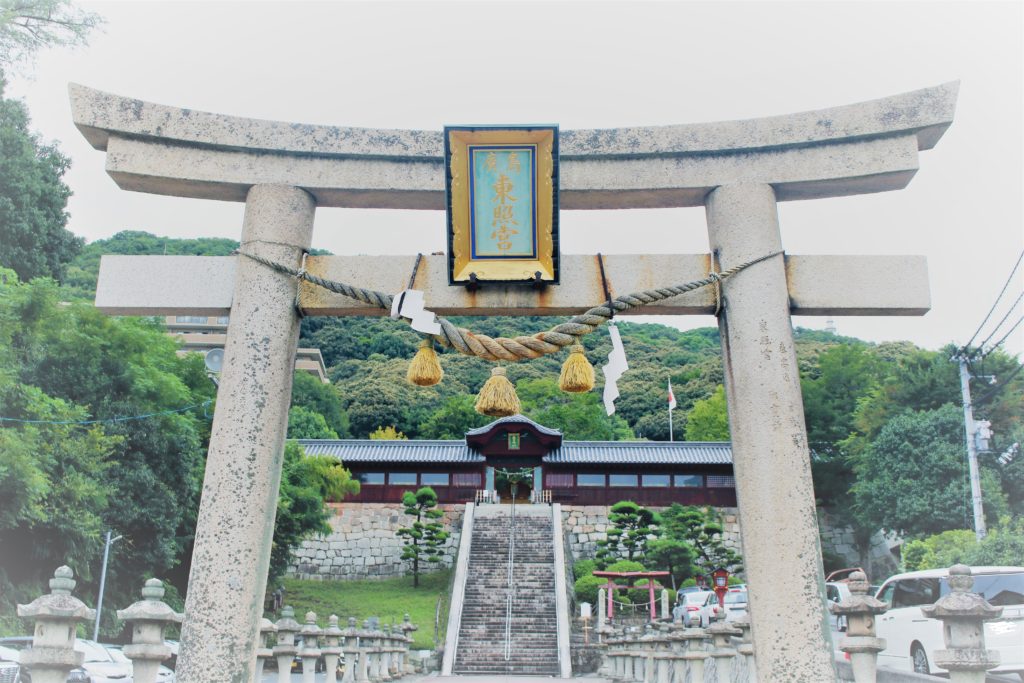
The Hiroshima Toshogu Shrine, dedicated to Tokugawa Ieyasu is located on a hill approximately 300 meters north of the JR Hiroshima Station.
Honden (the main hall) and Haiden (the worship hall) burned away after the atomic bombing, and then later rebuilt. But the Karamon gate, Yokuro (transept), Chozusha (purification trough), the Honjido hall, Gokusho (offering hall), Wakikado gate, and Mikoshi (the portable shrine), which have been here since the shrine was built, are all designated as important tangible cultural properties by the city of Hiroshima, featuring the architectural characteristics of the early Edo period to this day today. (*The Honjido hall is undergoing dismantling and repairing until 2023.)
Immediately after the atomic bombing, people flocked to this place, overlooking the city of Hiroshima, for water. A memorial for the bombing was erected beside the road to the shrine. We asked Ms. Kubota Keiko, a senior priestess at the shrine, about the origins of the Hiroshima Toshogu Shrine, and what things was like during the atomic bombing.
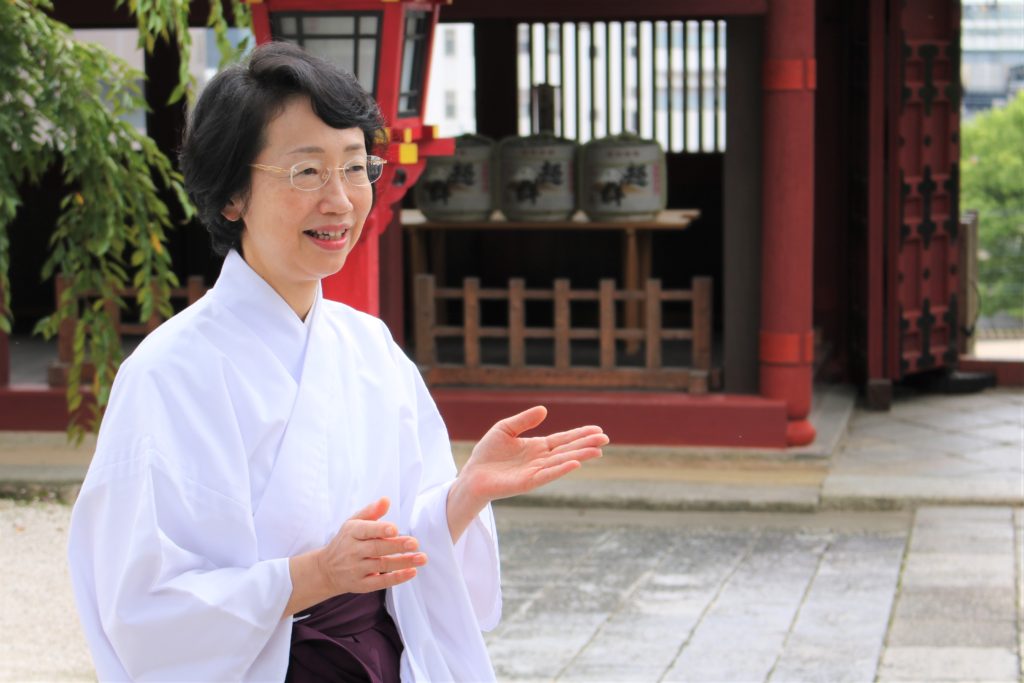
The Hiroshima Toshogu Shrine was built in 1648 by Lord Asano Mitsuakira, the second lord of the Hiroshima Domain. Lord Mitsuakira was the grandson of Lord Tokugawa Ieyasu, and he had a strong respect for his grandfather. He spent almost three years diligently building the temple, even inviting a famous craftsman from Kyoto.
The Edo period (1603-1868) was a time of peace that lasted for approximately 260 years after a long period of warfare. It is said that no other country in the world has seen such a long period of peace. It can be said that Lord Ieyasu enshrined here as the God of Peace, as he laid the foundation for this peace era.
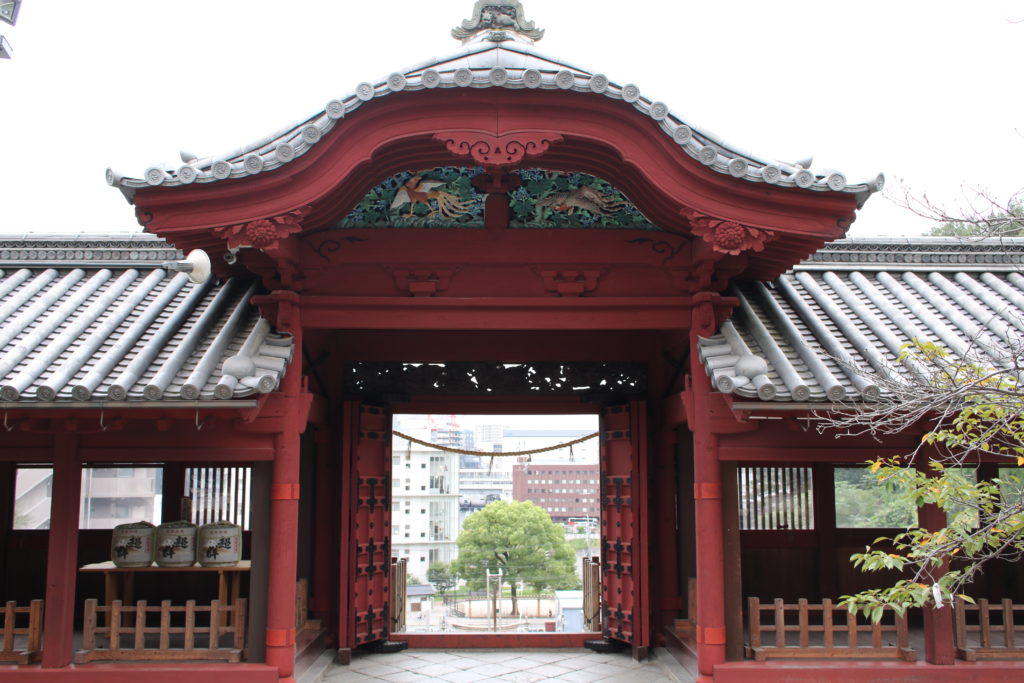
When the atomic bomb was dropped, the Karamon gate and the transept, which were about 2.3 km from ground zero, were tilted by the blast, and the main hall and the worship hall, which were thatched with cypress bark, began smoking f burning. A military communications team was stationed there, and they used a bucket relay to try to extinguish the fire from the well behind the shrine. But the fire spread quickly, and the main hall and the worship hall were completely burned down. It is said, however, that the sacred object enshrined in the main hall was saved from the fire by the soldiers, who went in and carried it out. While many shrines and temples in the city burned to the ground, the sacred object was saved miraculously.
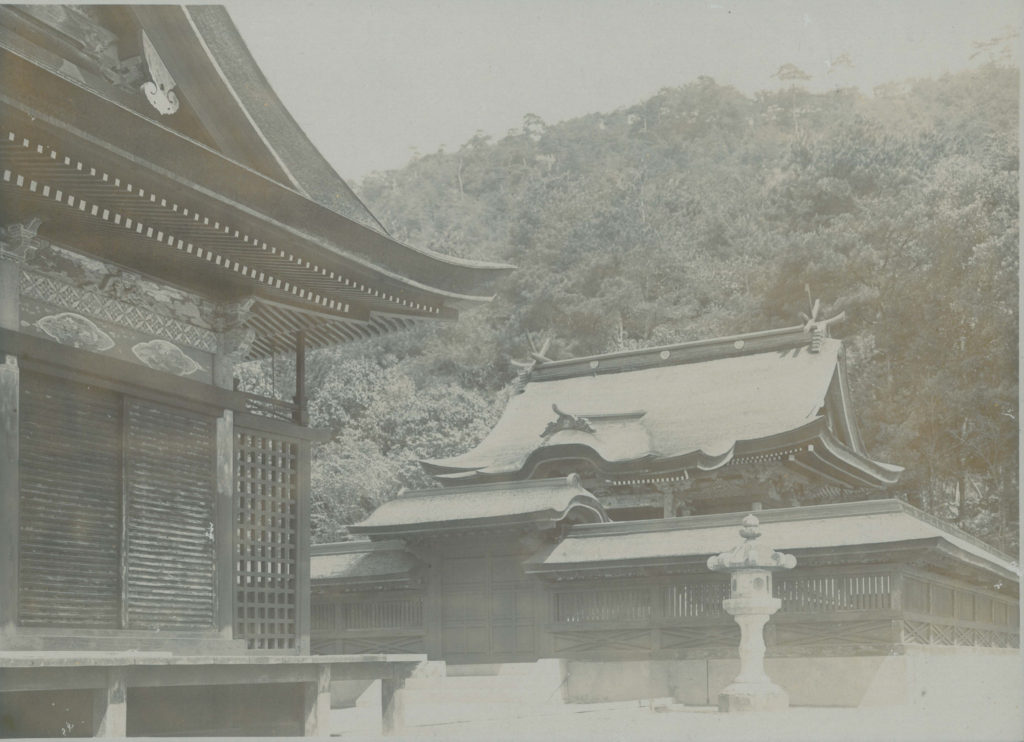
The main hall in the Taishou era
My father, the previous head priest of the shrine, was a junior high school student at the time. He was evacuated to Hachihonmatsu (Higashi-Hiroshima City), which saved him from direct exposure to the atomic bombing. When he returned to Hiroshima three days later, he saw the devastation the city was met with. When he returned to The Hiroshima Toshogu Shrine, he found countless people lying at the bottom of the stairs, which served as the road to the shrine. There is a spring there, so I believe people came to get water. At the time, there were no tall buildings, so the area was clearly visible from all over the city. It may be that people who regarded the Toshogu Shrine as a symbol of their faith came here to seek help.
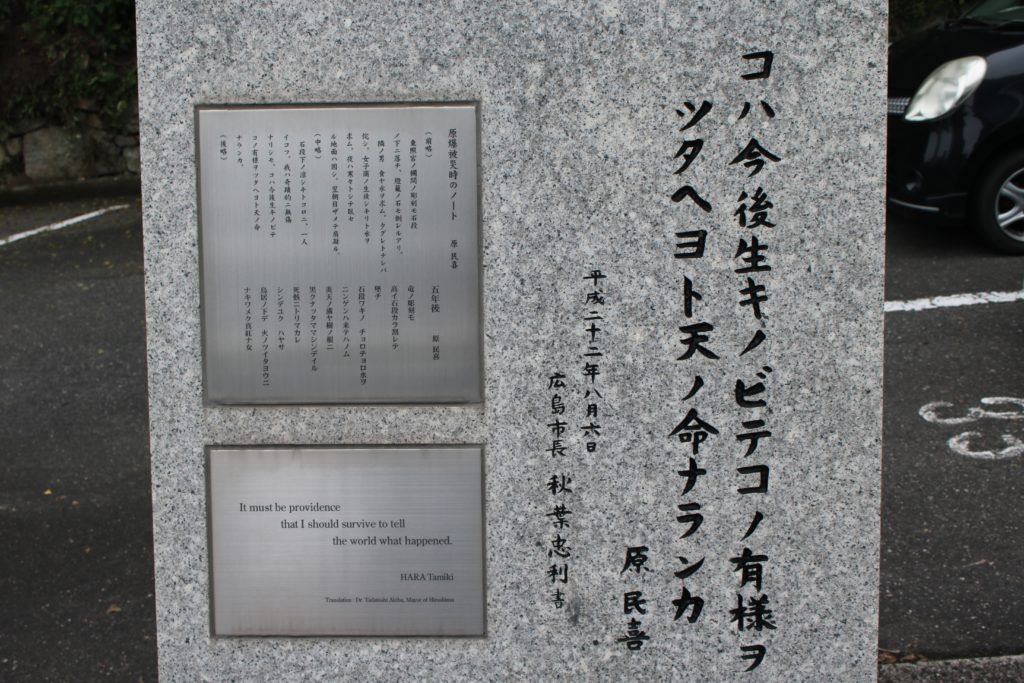
My father was asked by a female student of about the same age as him for water, but he refused, as he had heard that you must not give anyone water. The student died shortly afterwards. My father always regretted this. He did not talk much about the atomic bombing when he was young, but he began to tell me about it in his later years. Hara Tamiki, a poet who had evacuated here on the day after the bombing, left the words, “It is my heavenly mission as a survivor to tell the world what has happened here.” This is inscribed on the stone monument next to the Cenotaph for the A-bomb Victims at the bottom of the stairs. My father must have changed his mind, thinking that he, too, as a religious person, had to tell the story. In the years leading up to his death, he shared his experience at the Evening of Peace and Prayer, which is held every year on August 5 at seven shrines and temples in the Futabanosato area, including the Toshogu Shrine. The current priests and staff members at the shrine continue to pass down his story in the hope of sharing his experience with as many people as possible.
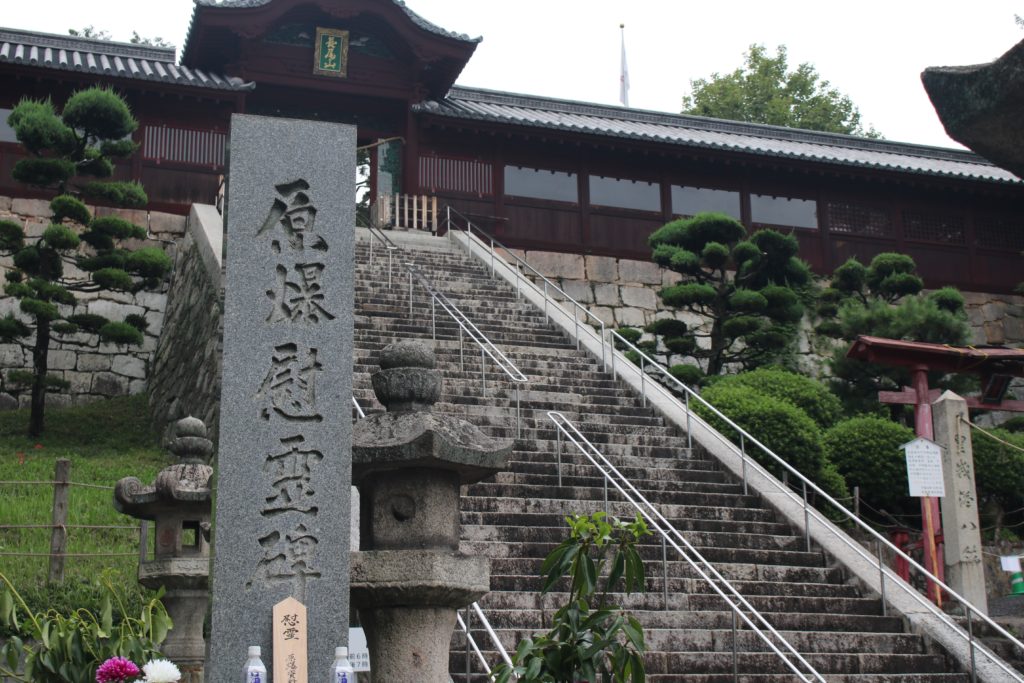
My grandfather, who was a priest two generations ago, was severely injured in the bombing. The dead were piled and cremated at the East Military Drill Ground, which was close by. After this, we built a cenotaph for the A-bomb victims at the bottom of the stairs of our shrine. Every year at 8:15am on August 6, our staff holds a memorial service for them.

In 2015, the Street Festival, which was once held every 50 years after Lord Ieyasu’s death, and had stopped after 1815, began once more. The festival coincided with the 70th anniversary of the atomic bombing, and so was started as a commemorative project by the city of Hiroshima. It became a grand festival that reviving a piece of traditional culture once lost due to the bombing, passing on the history and revitalizing the community. We hope to continue with more activities like this moving forward.
The Honjido hall and the Chozusha (purification trough) near the main hall and the hall of worship had traces of the burning until around 1975, but are now restored to their original state. The buildings that tilted by the blast were also restored to prevent collapsing from typhoons or earthquakes. The scars of the bombing no longer be seen directly today. Being a building that experienced the bombing, and being that we house the God of Peace, we will continue to work to protect peace. I believe that this is the mission of the Hiroshima Toshogu Shrine.
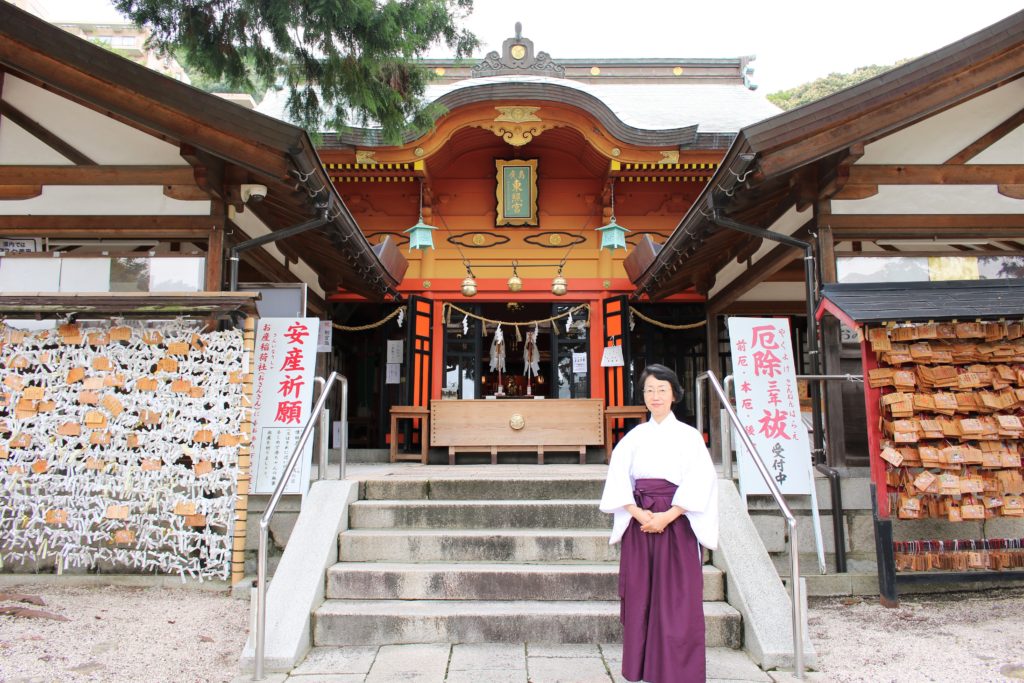
The Hiroshima Toshogu Shrine
Address: 2-1-18 Futabonosato, Higashi-ku, Hiroshima City
Phone number: 082-261-2954
HP: https://www.hiroshima-toshogu.or.jp/
Tags associated with this article



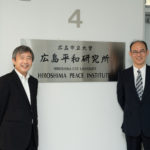

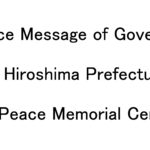
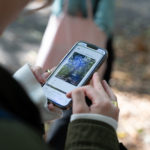
-150x150.png)
